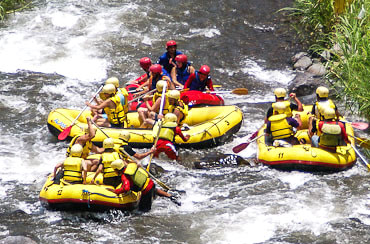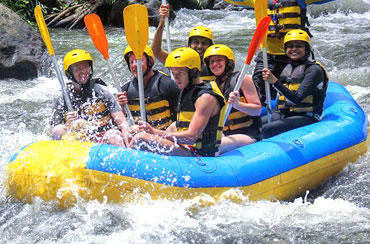UBUD MONKEY FOREST
UBUD MONKEY FOREST IN BALINESE LANGUAGE CALLED MANDALA WISATA WENARA WANA OWN VERY IMPORTANT FUNCTION OF THE CONTINUITY THE MONKEY HABITAT IN BALI
Ubud Monkey Forest occupies 27 lush, green acres at the lower end of Jalan Monkey Forest in the village of Padangtegal. Home to over 400 long tailed macaques (Macaca fascicularis) which are divided into 4 groups that occupy different areas of the park, it is an important cultural and spiritual site that welcomes upwards of 10,000 visitors each month. The Monkey Forest Sanctuary is actually owned and operated by the village of Padangtegal, with village members serving on a governing council that seeks to uphold the integrity of the grounds while promoting it as a tourist destination.
Ubud Monkey Forest is a small rain forest dwelt by some groups of monkeys and other tropical animals. It is strategically located in the heart of Ubud Village. Monkey Forests in Balinese language called Wanara Wana are spread out in the island and Ubud Monkey Forest itself is a very important function of the continuity of the monkey habitat in Bali. Meanwhile the local community has an important role to keep this forest naturally in order for all wild animals to be able to live smoothly.
Wanara Wana is the name of monkey forest in Sanskrit language, as the language ever influenced the layers of religious and ruling class of Indonesian archipelago before the fall into islam, and only Bali that strongly maintains the tradition. It is important to treat the monkeys with respect as this forest is their home and you are a guest in it. Please remain on the paved paths, the monkeys may become aggressive if you invade their private areas ( Wanara Wana staff and researchers may occasionally be seen in these areas please do not follow them).
It can often be seen how the Balinese Macaques are cracking open coconuts. If available they like to eat bananas and papayas, too. Once taken please leave the fruit with the monkeys. If you wish to feed the macaques please do so carefully, and if they take food from you, please do not attempt to retrieve it back. It is also of great importance that you treat the trees, the plants and other animals and structures within the Sacred Monkey Forest with great respect.
This is a holy area and an important ecological preservation, please enjoy the beauty and magic of this place. while at the same time respecting what lives in it. If you have any questions or if you need assistance, please ask the Wenara wana personnel ( identified by their green uniforms ) or a member of the research project.
Tri Hita Karana Thought
In accordance with Balinese Hindu thought, peace and liberty are obtainable in our life only when we respect and observe the three harmonious relationships known as the Tri Hita Karana with the following advises :
1. The Gods bless life and created nature and all of its entities
2. Nature provide sustainable support to the need of living beings
3. Human beings as the highest beings have the obligation to preserve mother nature which was in the past only a religious approach could operate before more reasons could take over the role.
Based on an analysis of a manuscript called Pura Purana ( meaning history of a Pura ) which is considered a holy writing, the temple was built around the 14th century during the reign of kings with the palace in the Pejeng area. If this assumption is taken, the establishment of the temple would be before 1343 AD, not at the beginning of Gelgel Palace which is far behind around the 17th century.
There are three temples in The Sacred Monkey Forest namely :
1. Pura Dalem Agung, located at the south western corner of the main forest area. This temple is the most prominent in Monkey Forest
2. The Holy Bathing Temple located down steps close to the water stream. This temple is divided into 3 courtyards ( mandalas ) with pools.
3. The Prajapati temple with cemetery located at the southernmost of the area.
Balinese Macaques at Ubud Monkey Forest
The monkeys that live in Ubud Monkey Forest are called Balinese macaques, also known as long tail macaques. Their scientific name is macaca fascicularis and aside from humans, macaques are the most widespread and successful of all primates. About 400 macaques currently reside in the monkey forest. There are approximately 35 adult males, 95 adult females and 170 young. These macaques live primarily in three clusters of females and males. Each of these groups tends to use different areas of the forest at different ties of the day. All macaques use all of the forest.
Conflicts sometimes arise when two groups are in the same area. Adult males weigh up to 8 to 10 kgs and have large canine teeth, broad shoulders and facial hair that resembles a mustache. The adult females are smaller than the males ( 4-8 kgs ) and have long facial hair resembling beads. Balinese macaques group is centered around groups of related females called matriline, Male macaques usually migrate in from other areas and attempt to associate themselves with the female matriline Both males and females have a dominance relationship, but they are not always clear or consistent.
Mating can take place all year round but most infants are born during the months of May - August. Macaque mothers range from very protective to very permissive with their infants. Many females who are not the mother spend time holding and caring for infants. Sometimes you will even see an adult male mothering as well.
Research and Conservation Ubud Monkey Forest
The Sacred Ubud Monkey Forest Sanctuary serves not only as an important component in the spiritual and daily life of the villagers, but is the site of several research and conservation programs. The maintenance and management of special places like this attract the attention of researchers from all over the world, especially the interaction between human beings and the monkeys of this sacred place are subject to surveys and research studies.
How to get to Ubud Monkey Forest
Ubud Monkey Forest located Jalan Hanoman (Jalan Monkey Forest) in the village of Padangtegal, Gianyar regency, Ubud, Bali, Indonesia. About 1,8 km or within 5 minutes drive away from Ubud Palace (Puri Saren) and Ubud Art Market. The distance from Kuta is around 55 kms, from Sanur around 40 kms and from Nusa Dua area around 65 kms. It’s pretty easy to get to the Sacred Ubud Monkey Forest Sanctuary, and can be reached by many sides besides from the central town of Ubud, from the eastern corner of Ubud and from the southern area of Ubud.
Ubud Monkey Forest Entrance Ticket
Adult : IDR 80,000Children : IDR 40,000
Opening Hours : 09.00 AM - 05.00 PM
Explore Related Bali Rafting Tour to Ubud Monkey Forest
Telaga Waja Rafting and Ubud Full Day Tour
Telaga Waja Rafting and Ubud Full Day Tour is exciting tours between rafting in telaga waja river and visiting Ubud Monkey Forest (Sacred Monkey Forest Sanctuary), Ubud Palace and Ubud Traditional Market ..... Read More
Ayung River Rafting and Ubud Full Day Tour
Ayung River Rafting and Ubud Full Day Tour is exciting tours between 2 hours rafting in ayung river ubud and visiting Ubud Monkey Forest, Ubud Palace, Ubud Traditional Market and Tegalalang Rice Terrace ..... Read More
Melangit River Rafting and Ubud Full Day Tour
Melangit River Rafting and Ubud Full Day Tour is exciting tours between 1,5 hours white water rafting in melangit river and visiting Ubud Monkey Forest, Ubud Palace, Ubud Traditional Market and Tegalalang Rice Terrace ..... Read More
TELAGA WAJA RAFTING PACKAGES
- Telaga Waja Rafting and Shopping Tour
- Telaga Waja Rafting and Tirta Empul Tour
- Telaga Waja Rafting and Ubud Full Day Tour
- Telaga Waja Rafting and Bali Waterfalls Tour
- Telaga Waja Rafting and Kintamani Day Tour
- Telaga Waja Rafting and Besakih Full Day Tour
- Telaga Waja Rafting and Uluwatu Full Day Tour
- Telaga Waja Rafting and Besakih Kintamani Tour
- Telaga Waja Rafting and Spa Packages
- Telaga Waja Rafting and Trekking Packages
- Telaga Waja Rafting and ATV Ride Packages
- Telaga Waja Rafting and Bali Swing Packages
- Telaga Waja Rafting and Seawalker Packages
- Telaga Waja Rafting and Safari Park Packages
- Telaga Waja Rafting and Water Sport Packages
- Telaga Waja Rafting and Horse Riding Packages
- Telaga Waja Rafting and Elephant Ride Packages
- Telaga Waja Rafting and Blue Lagoon Snorkeling
- Telaga Waja Rafting and Canyon Trekking
- Telaga Waja Rafting + Bali Swing + Spa
- Telaga Waja Rafting + ATV Ride + Spa
- Telaga Waja Rafting + Horse Riding + Spa
- Telaga Waja Rafting + Elephant Ride + Spa
AYUNG RIVER RAFTING PACKAGES
- Ayung River Rafting and Shopping Tour
- Ayung River Rafting and Tirta Empul Tour
- Ayung River Rafting and Ubud Full Day Tour
- Ayung River Rafting and Best Waterfalls Tour
- Ayung River Rafting and Uluwatu Full Day Tour
- Ayung River Rafting and Ulun Danu Temple Tour
- Ayung River Rafting and Tanah Lot Full Day Tour
- Ayung River Rafting and Besakih Kintamani Tour
- Ayung River Rafting and Kintamani Day Tour
- Ayung River Rafting and Spa Packages
- Ayung River Rafting and Canyon Trekking
- Ayung River Rafting and Cycling Packages
- Ayung River Rafting and Trekking Packages
- Ayung River Rafting and ATV Ride Packages
- Ayung River Rafting and Bali Swing Packages
- Ayung River Rafting and Safari Park Packages
- Ayung River Rafting and Horse Riding Packages
- Ayung River Rafting and Elephant Ride Packages
- Ayung River Rafting and Blue Lagoon Snorkeling
- Ayung River Rafting and Water Sport Packages
- Ayung River Rafting and Seawalker Packages
- Ayung River Rafting and Seafood Dinner
- Ayung River Rafting and Bali Bird Park
- Ayung River Rafting + Cycling + Spa
- Ayung River Rafting + ATV Ride + Spa
- Ayung River Rafting + Seawalker + Spa
- Ayung River Rafting + Bali Swing + Spa
- Ayung River Rafting + Horse Riding + Spa
- Ayung River Rafting + Elephant Ride + Spa
MELANGIT RIVER RAFTING PACKAGES
- Melangit River Rafting and Shopping Tour
- Melangit Rafting and Uluwatu Full Day Tour
- Melangit River Rafting and Tirta Empul Tour
- Melangit Rafting and Besakih Kintamani Tour
- Melangit River Rafting and Ubud Full Day Tour
- Melangit River Rafting and Tanah Lot Day Tour
- Melangit River Rafting and Kintamani Day Tour
- Melangit River Rafting and Best Waterfalls Tour
- Melangit River Rafting and Water Sport Packages
- Melangit River Rafting and Safari Park Packages
- Melangit River Rafting and Bali Swing Packages
- Melangit River Rafting and Seawalker Packages
- Melangit River Rafting and ATV Ride Packages
- Melangit River Rafting and Trekking Packages
- Melangit Rafting and Blue Lagoon Snorkeling
- Melangit River Rafting and Canyon Trekking
- Melangit River Rafting and Seafood Dinner
- Melangit River Rafting and Spa Packages
- Melangit River Rafting and Elephant Ride
- Melangit River Rafting and Horse Riding
- Melangit River Rafting and Bali Bird Park
- Melangit River Rafting + Bali Swing + Spa
- Melangit River Rafting + ATV Ride + Spa
- Melangit River Rafting + Horse Riding + Spa
- Melangit River Rafting + Elephant Ride + Spa






